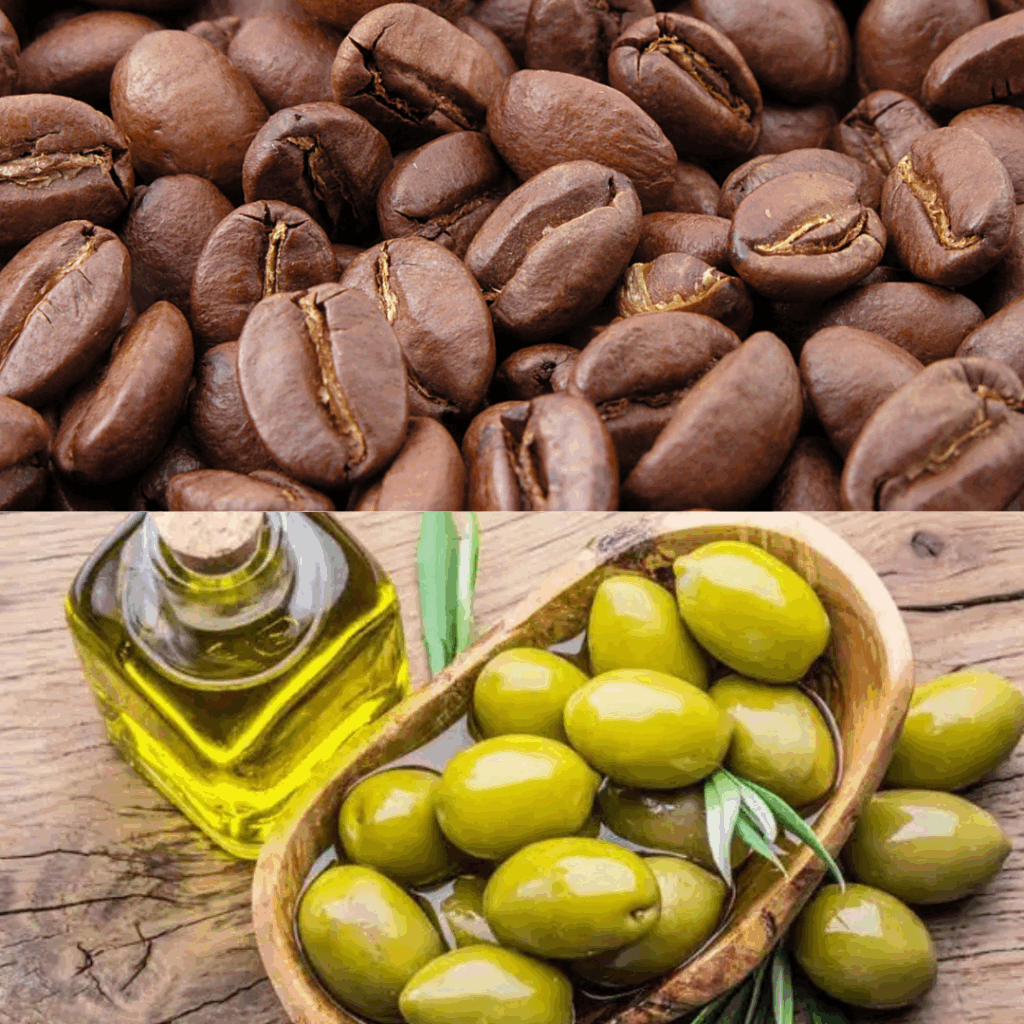The cosmetic industry, a significant sector of the global economy, has seen substantial advancements in formulation and technology, driven by increasing consumer concerns regarding skin aging, dermatological imperfections, and conditions like acne and skin cancer. This heightened awareness has spurred demand for aesthetically pleasing and healthy skin, while simultaneously fostering a growing preference for natural components and products with lower environmental impact. Consumers are increasingly adopting eco-conscious lifestyles, prioritizing “natural,” “absence of chemical toxic substances,” and “product tolerability”. This shift, coupled with rising interest from organizations and the scientific community in environmental sustainability, necessitates that the cosmetic industry actively pursue more environmentally sustainable raw materials.
A compelling solution to this challenge involves the valorization of agri-food by-products, specifically those derived from coffee and olive processing. These residues are generated in substantial quantities and often remain underutilized, contributing to environmental burdens and economic losses. However, they are unequivocally rich in bioactive compounds. For instance, coffee by-products are abundant in caffeine and chlorogenic acids, while olive by-products are excellent sources of oleuropein, hydroxytyrosol, and tyrosol. These compounds possess significant health-promoting properties, including antioxidant, anti-aging, UV protective, antimicrobial, emollient, and moisturizing effects, making them promising active ingredients for cosmetic formulations. The incorporation of these natural ingredients aligns with sustainability objectives, meets regulatory and environmental standards, and satisfies the growing consumer demand for safer, more effective, and environmentally sustainable cosmetic products, exemplifying a circular economy approach. This review comprehensively evaluates these potential solutions, including their biological composition, extraction techniques, and applications in cosmetics, an area that has been seldom examined.
Key Findings
• Abundant Agri-Food By-products: Significant quantities of coffee by-products (pulp, husk, spent coffee grounds, silverskin) and olive by-products (mill wastewater, pomace, stones, leaves) are produced annually, which are largely underutilized, leading to environmental and economic issues.
• Rich in Bioactive Compounds:
◦ Coffee by-products are rich in carbohydrates, proteins, vitamins, and bioactive compounds like caffeine and chlorogenic acids, along with melanoidins, caffeic acid, cafestol, and kahweol.
◦ Olive by-products are abundant in phenolic compounds, including phenolic alcohols (tyrosol and hydroxytyrosol), phenolic acids (caffeic acid, gallic acid, verbascoside), flavonoids (luteolin, apigenin, rutin), secoiridoids (oleuropein, ligstroside), lignans (pinoresinol), and other lipophilic compounds like squalene, fatty acids (oleic acid), and vitamin E.
• Diverse Cosmetic Applications: These bioactive compounds offer numerous benefits, including antioxidant, anti-aging, UV protective, anti-inflammatory, antimicrobial, emollient, moisturizing, skin whitening/lightening, cellulite reduction, and hair growth stimulation. Specific examples include chlorogenic acid’s anti-wrinkle and wound healing effects, caffeine’s role in microcirculation and hair growth, and hydroxytyrosol’s ability to reduce skin pigmentation and enhance the epidermal barrier.
• Extraction Methodologies: Both conventional and green extraction techniques are employed for recovery.
◦ Conventional methods like solid-liquid extraction (e.g., Soxhlet) are simple and cost-effective but less environmentally sustainable, time-consuming, and require large solvent volumes.
◦ Green extraction technologies such as ultrasound-assisted extraction (UAE), microwave-assisted extraction (MAE), supercritical fluid extraction (SFE), deep eutectic solvents (DES), Natural Deep Eutectic Solvents (NaDES), and enzyme-assisted extraction (EAE) offer advantages like shorter processing times, reduced solvent use, and improved extraction yields, aligning with sustainability goals. However, some green methods may require substantial investment for industrial scaling.
• Commercialization and Synergistic Potential: Some industries have already commercialized products utilizing these by-product derived ingredients, such as VICHY’s caffeine-based eye serum and OLIVEDA’s skincare line with olive leaf extracts. Furthermore, coffee and olive by-products can be used concurrently for synergistic effects, as demonstrated in a hair care formulation that stimulated hair growth and provided anti-dandruff activity and nourishment.
Future implications of this research are extensive. Priority areas include optimizing extraction methodologies to achieve standardized extracts with uniform bioactive profiles, which is critical given the seasonal and geographical variability of raw materials. Enhancing the number of clinical and dermatological investigations is also imperative to validate the safety and efficacy of these ingredients in diverse formulations. Furthermore, addressing the industrial scalability and cost-efficiency of advanced green extraction methods (such as UAE, MAE, DES, and EAE) remains a significant challenge that requires further exploration to facilitate their widespread adoption. Quantifying the carbon savings and waste reuse facilitated by this valorization within the cosmetic industry would provide concrete data to substantiate sustainability claims and foster further innovation in this promising field.
Link to the study: https://www.mdpi.com/2079-9284/12/5/206


